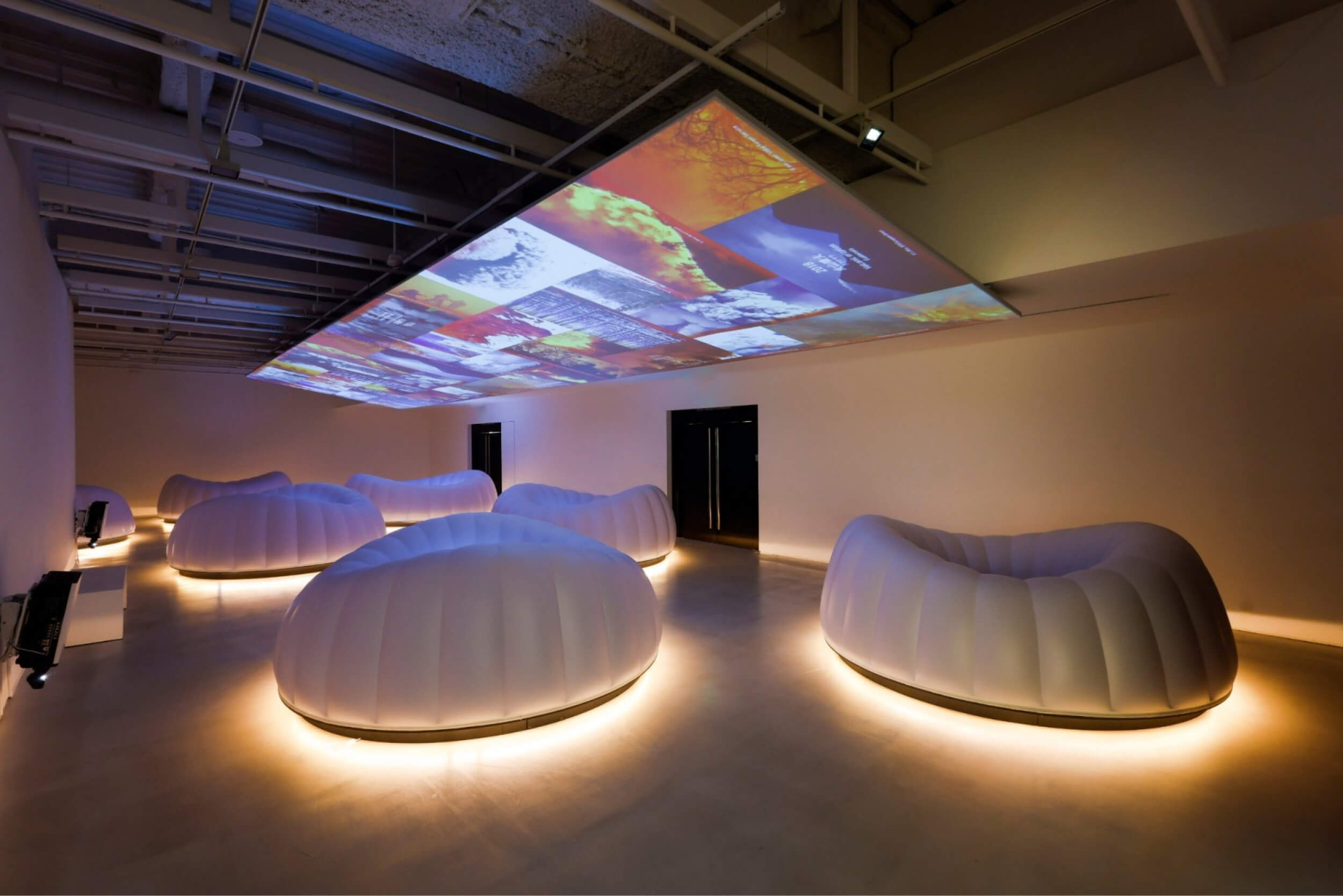Regenerative Urbanism: One Exhibition, Seven Proposals

“Designing with Disaster”, Los Angeles, California, 2023. Photo: ©JAPAN HOUSE Los Angeles.
Amidst the constant and unpredictable transformation of the planet, can a harmonious balance between the natural and built environment be achieved? Can design become a reconciliatory tool capable of facilitating this symbiosis? Ultimately, can cities be constructed in a way that doesn’t conflict with the nature but rather embraces its ordinary functioning as an integral part of daily life?
JAPAN HOUSE Los Angeles’ exhibition “Designing with Disaster” focuses on the “regenerative urbanism”. This perspective, which centers on urban design in the context of disasters, is thoroughly examined through projects developed under the umbrella of ArcDR3, an international architecture and urban design research initiative.
The exhibition’s starting point is the 2011 Tohoku Earthquake, considered one of the most devastating disasters in both Japanese and global history. With a magnitude of 9.1, the earthquake, accompanied by a tsunami, claimed the lives of over 19,000 people, leaving more than 2,000 missing. In response to this tragedy, a 15-year action plan was formulated in 2015 during the UN World Conference on Disaster Risk Reduction held in Sendai, near the earthquake’s epicenter. The ArcDR3 initiative, a collaborative effort involving 11 universities and led by Xlab, an international research center affiliated with the University of California (UCLA), and IRDeS, the international disaster science research institute of Tohoku University, emerged in alignment with this action plan.
The Story of the Seven Cities: Wall, Cloud, Columns, and Wells…
The exhibition, an outcome of studies conducted within ArcDR3, presents seven proposals, each delving into strategies for managing disasters and establishing resilient living spaces. The exhibition is structured around four components: “Wall”, “Cloud”, “Column”, and “Well”. The journey begins with the “Wall”, welcoming visitors at the entrance and providing an introduction to ArcDR3 research and the “regenerative urbanism” approach. As visitors progress, the “Columns” showcase statistical data, encouraging reflection on their connection with the planet and fostering a deeper understanding of crisis areas. The heart of the gallery features seven “Wells” where urban design proposals for potential disaster scenarios are on display. Each regenerative city experience comes to life through drawings, animations, and interviews that delve into the design concepts.
You can find more details about the project in the gallery.
Photos: by courtesy of JAPAN HOUSE Los Angeles
The “Cloud” that ascends above the “Wells” is a projection screen suspended from the ceiling: a colossal mosaic displaying digital maps, videos, and photographs that visualize the devastation caused by earthquakes, volcanic eruptions, tsunamis, and floods recorded worldwide over the last century. This projection screen serves as a poignant reminder of the inevitability of natural phenomena and the imperative for humanity to coexist with the environmental risks.
 |
 |
 |
 |
Photos: by courtesy of ©JAPAN HOUSE Los Angeles
In conjunction with the exhibition, which will remain open to visitors until April 2, 2023, two panels titled “Global Japan Forum 2023: Designing with Disaster” were held, featuring the participation of architects, academics, and researchers from Turkey and abroad. The aim was to discuss the lessons learned from the environmental disasters and how to create disaster-resilient environments in the future. Recordings of these panels are available here.








